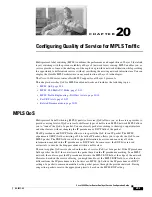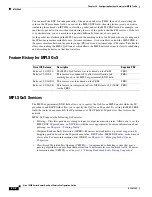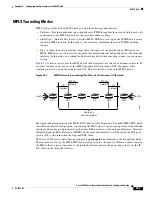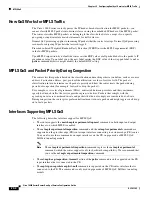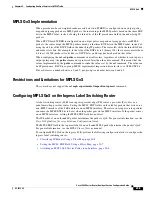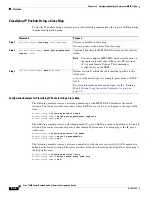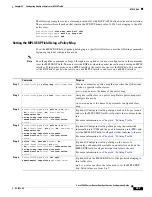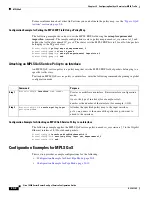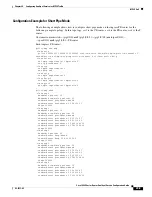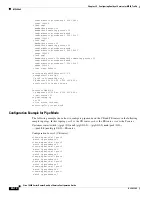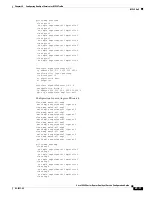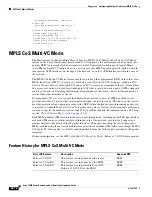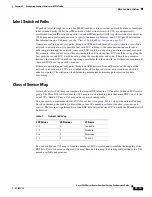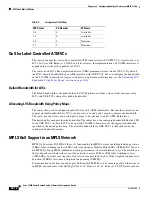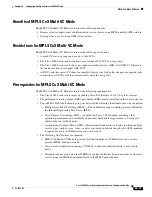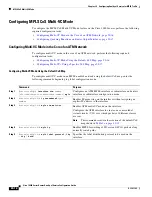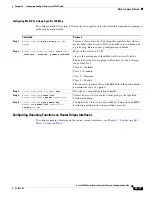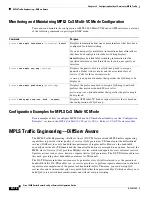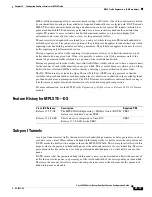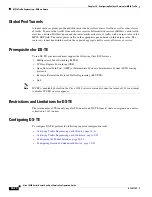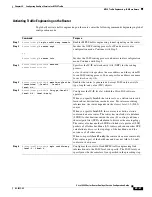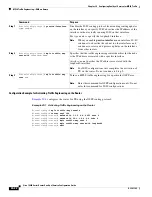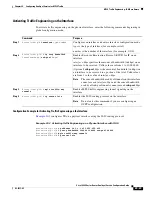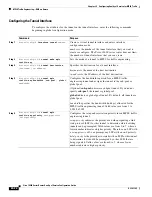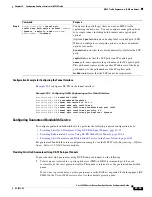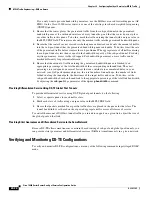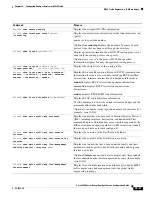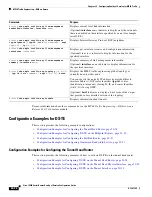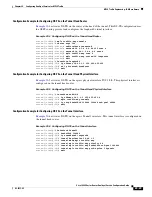
20-14
Cisco 10000 Series Router Quality of Service Configuration Guide
OL-7433-09
Chapter 20 Configuring Quality of Service for MPLS Traffic
MPLS CoS Multi-VC Mode
QoS for Label-Controlled ATM VCs
The router dynamically creates label-controlled ATM virtual circuits (LC-ATM VCs), also referred to as
LVCs. In Cisco IOS Release 12.0(28)S and later releases, the implementation of LC-ATM interfaces is
expanded to provide QoS capability for LVCs.
The router treats LVCs like unspecified bit rate (UBR) permanent virtual circuits (PVCs). By default,
the LVCs share the bandwidth on an ATM interface with UBR PVCs. You can configure the bandwidth
on the LC-ATM subinterface using a nested policy map. For more information, see the
“Allocating LVC
Bandwidth Using Policy Maps” section on page 20-14
.
Default Bandwidth for LVCs
The default bandwidth is the bandwidth an LC-ATM interface will have when it first becomes active.
LVCs and UBR PVCs share all available bandwidth.
Allocating LVC Bandwidth Using Policy Maps
The router allows you to configure bandwidth for an LC-ATM subinterface. Because the router does not
support a default bandwidth for LVCs, you must use a nested policy map to configure the bandwidth.
The router does not allow non-nested policy maps to be attached to an LC-ATM subinterface.
The nested policy map provides the bandwidth. The router treats the configured bandwidth like the SCR
of the VBR PVCs, in that all LVCs on a specific LC-ATM subinterface use the aggregate bandwidth
specified in the nested policy map. The available bandwidth for UBR PVCs is then reduced by the
configured bandwidth amount.
MPLS QoS Support in an MPLS Network
MPLS QoS provides IOS IP QoS (Layer 3) functionality for MPLS devices, including label edge routers
(LERs), label switching routers (LSRs), and Asynchronous Transfer Mode LSRs (ATM-LSRs). You can
use MPLS QoS in an MPLS-enabled networking environment in several different ways. The method you
choose depends on whether the core of the network contains LSRs or ATM label switching routers
(ATM-LSRs). In either case, the same QoS services are provided, such as CAR, weighted random early
detection (WRED), class-based weighted fair queueing (CBWFQ).
For information about how you can deploy LSRs and ATM-LSRs to take advantage of QoS functions in
an MPLS network, refer to the
MPLS QoS Multi-VC Mode for PA-A3
, Release 12.2(2)T feature module.
Table 2
Configured CoS Map
EXP Values
VC Number
VC Name
0, 4
0
Available
1, 5
0
Available
2, 6
2
Premium
3, 7
2
Premium


